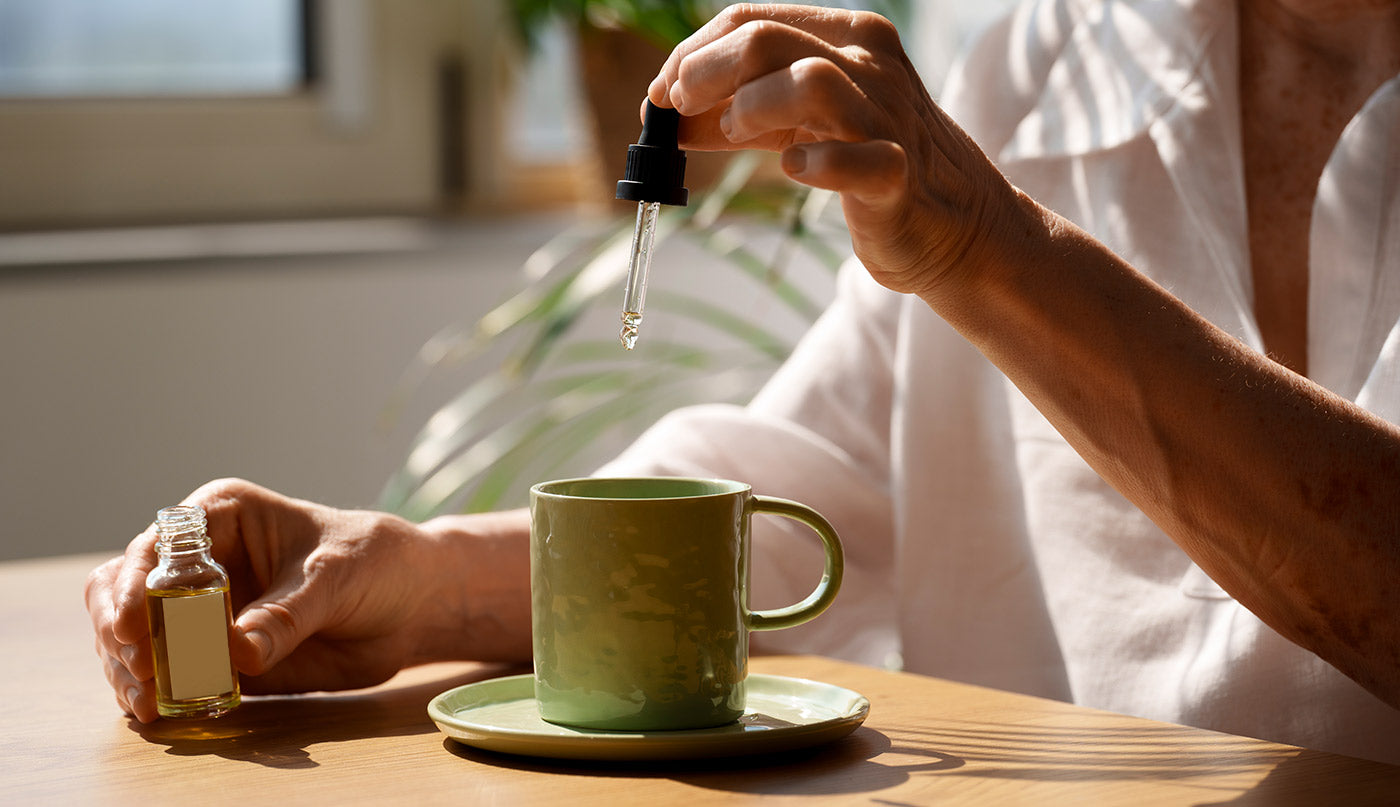
Joint Pain: Understanding Causes, Symptoms, and Holistic Treatments
Joint pain is a common condition that can affect anyone, from athletes and active individuals to older adults and those with underlying health issues. This discomfort can range from mild and temporary to severe and chronic, impacting daily activities and overall quality of life.
It can be acute (short-term) or chronic (lasting more than three months) and can vary in intensity. Joint pain is often associated with conditions like arthritis, but it can also result from injury, infections, or repetitive stress.
Symptoms of Joint Pain
Joint pain symptoms vary depending on the cause and severity of the condition. Common symptoms include:
- Pain and Tenderness: Discomfort in the joint, which may worsen with movement or at the end of the day.
- Stiffness: Difficulty moving the joint, particularly after periods of rest or inactivity.
- Swelling and Redness: Visible inflammation or warmth around the affected joint, indicating an inflammatory response.
- Reduced Range of Motion: Limited flexibility or movement in the joint, which can hinder daily activities.
- Clicking or Grinding Sensations: These sensations, known as crepitus, are often experienced in joints affected by cartilage loss or degeneration.
Causes of Joint Pain
Joint pain can arise from various underlying causes. Some common causes include:
- Arthritis: The most common cause of joint pain, with osteoarthritis and rheumatoid arthritis being the primary types. Osteoarthritis results from cartilage wear and tear, while rheumatoid arthritis is an autoimmune disorder that inflames the joints.
- Injury: Trauma to the joint, such as sprains, strains, or fractures, can lead to joint pain, particularly if the joint is not given adequate time to heal.
- Bursitis and Tendinitis: Bursitis involves inflammation of the bursae (fluid-filled sacs around joints), while tendinitis is inflammation of the tendons. Both can cause pain, swelling, and stiffness in the joints.
- Infections: Viral or bacterial infections, including viral arthritis or septic arthritis, can lead to joint pain and swelling, often requiring medical treatment.
- Autoimmune Diseases: Conditions like lupus and psoriatic arthritis cause the immune system to attack healthy joint tissues, resulting in pain and inflammation.
- Gout: A form of arthritis caused by the accumulation of uric acid crystals in the joint, often leading to sudden and severe joint pain, particularly in the big toe.
- Lifestyle Factors: Sedentary lifestyle, excess weight, and poor posture can place stress on joints, causing or exacerbating joint pain over time.
Conventional Treatment Options for Joint Pain
The treatment for joint pain depends on the underlying cause and severity of symptoms. Conventional approaches often include:
- Medications: Pain relievers, anti-inflammatory drugs (NSAIDs), and corticosteroids may help reduce pain and inflammation. For chronic conditions, disease-modifying antirheumatic drugs (DMARDs) are sometimes prescribed.
- Physical Therapy: Exercises and stretches aimed at strengthening the muscles around the joints, improving range of motion, and reducing pain. Physical therapy can be particularly effective for injuries and arthritis-related pain.
- Injections: Corticosteroid injections provide temporary relief by reducing inflammation, while hyaluronic acid injections act as joint lubricants, which can benefit those with osteoarthritis.
- Surgery: In severe cases where joint damage is extensive, surgical options like joint replacement or arthroscopy may be recommended to restore function and relieve pain.
Holistic Treatments for Joint Pain
Holistic approaches to joint pain focus on natural, non-invasive methods that address pain and inflammation without relying solely on medications. Here are some effective holistic treatments for managing joint pain:
1. Anti-Inflammatory Diet
Diet plays a significant role in managing inflammation and supporting joint health. A balanced, anti-inflammatory diet can help reduce pain and protect joint tissues.
- Omega-3 Fatty Acids: Omega-3s, found in fatty fish like salmon, flaxseeds, and chia seeds, have strong anti-inflammatory properties that can help reduce joint pain and stiffness.
- Fruits and Vegetables: Colourful produce, such as berries, leafy greens, and bell peppers, are rich in antioxidants that fight inflammation and support tissue repair.
- Turmeric and Ginger: These spices contain curcumin and gingerol, respectively, which have been shown to reduce inflammation and alleviate joint pain. They can be consumed in food or taken as supplements.
2. Herbal Supplements
Certain herbal supplements may help reduce joint pain and inflammation naturally. It’s important to consult with a healthcare provider before starting any supplements, especially if taking other medications.
- Boswellia (Frankincense): Known for its anti-inflammatory properties, Boswellia has been shown to reduce pain and improve joint function in people with arthritis.
- Willow Bark: Often called "nature’s aspirin," willow bark has analgesic effects that may help alleviate pain in those with mild joint pain.
- Glucosamine and Chondroitin: These supplements are commonly used to support cartilage health, though results vary. Some people report reduced pain and improved joint function.
3. Physical Activity and Exercise
Regular, gentle exercise is essential for maintaining joint mobility, strengthening muscles, and improving flexibility, all of which support joint health.
- Low-Impact Exercises: Activities like walking, swimming, and cycling improve circulation and reduce stiffness without placing undue stress on the joints.
- Strength Training: Building muscle around the joints adds support and stability, which can relieve pressure on affected joints.
- Stretching and Range of Motion Exercises: Regular stretching helps maintain flexibility, reduce stiffness, and improve movement in the joints.
4. Mind-Body Practices
Mind-body practices can help with pain management and reduce stress, which may exacerbate joint pain.
- Yoga: Yoga improves strength, flexibility, and balance, which are essential for joint health. Research shows that yoga can help reduce pain and improve joint function in people with arthritis.
- Tai Chi: This gentle martial art combines slow, controlled movements and deep breathing, which can reduce pain and improve mobility.
- Meditation and Mindfulness: Mindfulness practices can increase pain tolerance, improve mood, and help individuals manage chronic pain more effectively.
5. Acupuncture
Acupuncture, a traditional Chinese medicine technique, involves inserting thin needles into specific points on the body to stimulate pain relief. Some studies suggest that acupuncture may help reduce pain and inflammation in people with arthritis and other joint conditions by releasing endorphins, the body's natural painkillers, and improving blood flow.
6. Heat and Cold Therapy
Heat and cold therapy are simple yet effective ways to manage joint pain and stiffness.
- Heat Therapy: Applying warmth through heating pads or warm compresses can relax muscles, increase circulation, and ease joint stiffness.
- Cold Therapy: Ice packs reduce inflammation and numb pain, which can be particularly helpful after physical activity or during flare-ups.
Self-Care Tips for Managing Joint Pain
In addition to holistic treatments, certain lifestyle changes and self-care practices can help manage joint pain:
- Maintain a Healthy Weight: Excess weight puts extra strain on weight-bearing joints, so achieving a healthy weight can reduce pain and slow joint damage.
- Stay Hydrated: Drinking plenty of water helps maintain joint lubrication and supports overall health.
- Practice Good Posture: Sitting and standing with proper posture reduces stress on joints, particularly in the spine, knees, and hips.
Summary
Joint pain is a common condition that can significantly impact quality of life, but it is manageable with the right approach. By combining conventional treatments with holistic therapies, such as anti-inflammatory diets, regular exercise, and mind-body practices, people can achieve greater relief and improved joint health.
Our clinic offers a comprehensive approach to managing joint pain, with tailored treatment plans that incorporate both medical and holistic options.
If you’re experiencing joint pain, consider exploring these holistic approaches as part of your overall treatment plan. As always, consult with a healthcare professional before beginning any new treatments, especially supplements or alternative therapies, to ensure they’re safe and suitable for your specific condition.

